Scales
-
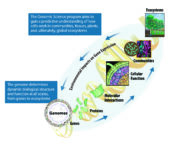
Gene Function Across Multiple Scales
Understanding gene function across multiple levels of biological organization is a key objective of the Department of Energy’s Genomic Science program.
-
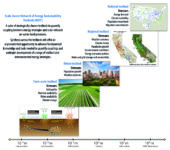
Proposed Network of Energy Sustainability Testbeds (With Text)
These testbeds comprise a suite of strategically distributed study sites chosen to span a range of scales, each relevant to a particular energy strategy and associated air-water-land forcing. Each testbed could be used for experiments, observations, and modeling to address a unique set of questions. Synthesis across the testbeds could offer an unprecedented opportunity for advancing the fundamental knowledge and tools needed to develop a range of resilient and interconnected energy strategies.
-
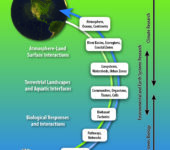
Spatial Scales Addressed by BER Research
BER research spans a broad range of natural systems. These systems are not only structurally and spatially complex, with many different interacting parts spanning molecular to global scales, they also are dynamically complex, encompassing processes that occur over time scales ranging from nanoseconds to centuries.
-

-

-

-

-

-
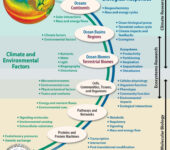
Scales and Processes of the Global Carbon Cycle
The global carbon cycle is determined by the interactions of climate, the environment, and Earth’s living systems at many levels, from global to molecular. Relating processes, phenomena, and properties across spatial and temporal scales is critical for deriving a predictive mechanistic understanding of the global carbon cycle to support more precise projections of climate change and its impacts. The domains of climate, ecosystem, and molecular biology research each has a limited reach in scales, constrained by the complexity of these systems and limitations in empirical and modeling capabilities. While linking comprehensively from genomes to global phenomena is intractable, many connections at intermediate scales are viable with integrated application of new systems biology approaches and powerful analytical and modeling techniques at the physiological and ecosystem levels. Biological responses (blue) are to the right of the systems ovals, and climate and environmental factors (green) are to the left of the systems ovals.
-
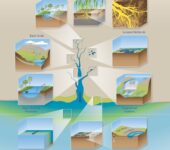
Terrestrial-Aquatic Interface Continuum
Terrestrial-Aquatic Interfaces (TAI) Continuum. This illustration shows the differences in spatial scale
of some of the commonly studied systems that TAI research seeks to integrate, namely interfaces associated
with headwater streams, rivers, wetlands and floodplains, estuaries, and coasts. These subsystems are connected to one another through hydrology, geomorphology, solute and particulate transport, and ecological
relationships, forming an integrated terrestrial-aquatic continuum from land to ocean.